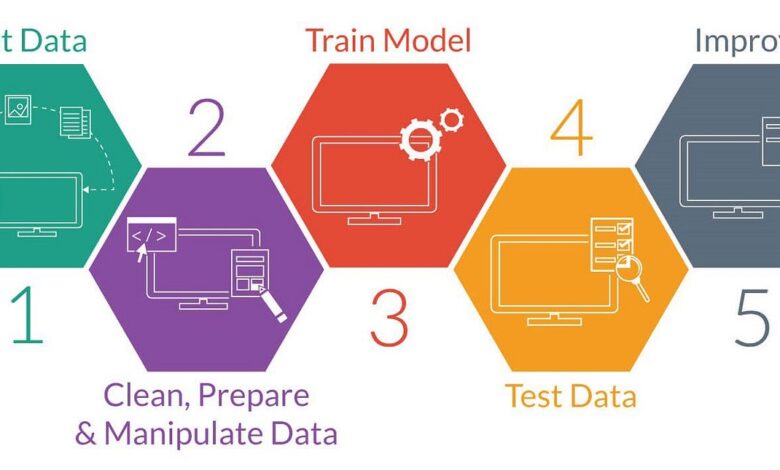How Does Machine Learning Work Step by Step?

Machine learning (ML) is a subset of artificial intelligence (AI) that enables systems to learn from data and improve over time without explicit programming. It is widely used in various industries, including healthcare, finance, and entertainment. In this guide, we will break down the step-by-step process of how machine learning works, making it easier for beginners to understand.
Step 1: Define the Problem
Before starting any machine learning project, it’s crucial to define the problem you want to solve. This involves:
- Identifying the goal (e.g., predicting customer churn, detecting fraud, recommending products).
- Understanding the data required to address the problem.
- Establishing success criteria (e.g., achieving a 90% accuracy rate).
Step 2: Collect and Prepare Data
Data is the backbone of machine learning. The steps in this stage include:
- Gathering Data: Collect structured or unstructured data from sources such as databases, APIs, or online repositories.
- Cleaning Data: Remove duplicates, handle missing values, and correct errors to ensure high-quality data.
- Transforming Data: Convert categorical variables into numerical ones, normalize or standardize numerical values, and perform feature engineering.
- Splitting Data: Divide the dataset into training, validation, and test sets (e.g., 70% training, 20% validation, 10% test).
Step 3: Choose a Machine Learning Model
There are different types of machine learning models, such as:
- Supervised Learning: Uses labeled data for classification (e.g., spam detection) and regression (e.g., house price prediction).
- Unsupervised Learning: Finds patterns in unlabeled data (e.g., clustering similar customers).
- Reinforcement Learning: Learns by interacting with an environment and receiving feedback (e.g., self-driving cars).
Choosing the right model depends on the problem type and the available data.
Step 4: Train the Model
Training a model involves:
- Selecting an Algorithm: Options include decision trees, neural networks, support vector machines, and more.
- Feeding Data into the Model: The training set is used to teach the model patterns in the data.
- Adjusting Parameters: Optimizing hyperparameters (e.g., learning rate, number of layers) to improve performance.
Step 5: Evaluate Model Performance
After training, the model must be evaluated to measure its effectiveness. Common metrics include:
- Accuracy: Percentage of correct predictions.
- Precision & Recall: Measures of classification performance.
- Mean Squared Error (MSE): Used for regression models.
Cross-validation techniques help ensure the model generalizes well to new data.
Step 6: Optimize and Fine-Tune the Model
Improving model performance may involve:
- Hyperparameter Tuning: Adjusting parameters to enhance accuracy.
- Feature Selection: Removing irrelevant features to improve efficiency.
- Adding More Data: Increasing dataset size for better learning.
- Using Advanced Algorithms: Switching to more complex models if necessary.
Step 7: Deploy the Model
Once the model performs well, it’s deployed for real-world use. This step includes:
- Integrating the Model into Applications: Using APIs, web apps, or cloud services.
- Monitoring and Updating: Regularly tracking performance and retraining if necessary.
- Scaling: Handling larger data loads as demand increases.
Conclusion
Machine learning follows a structured process, from defining a problem to deploying a model. Understanding these step-by-step machine learning processes helps beginners grasp how AI systems learn and improve. With the right data, model selection, and fine-tuning, ML can solve complex problems efficiently.
Frequently Asked Questions (FAQs)
1. What are the basic steps in machine learning?
The main steps include problem definition, data collection, model selection, training, evaluation, optimization, and deployment.
2. Do I need coding skills to learn machine learning?
Basic programming knowledge (Python, R) is helpful, but beginner-friendly tools like Google AutoML and Teachable Machine reduce the need for coding.
3. What is the best algorithm for beginners?
Decision trees, linear regression, and logistic regression are simple and easy to understand for beginners.



